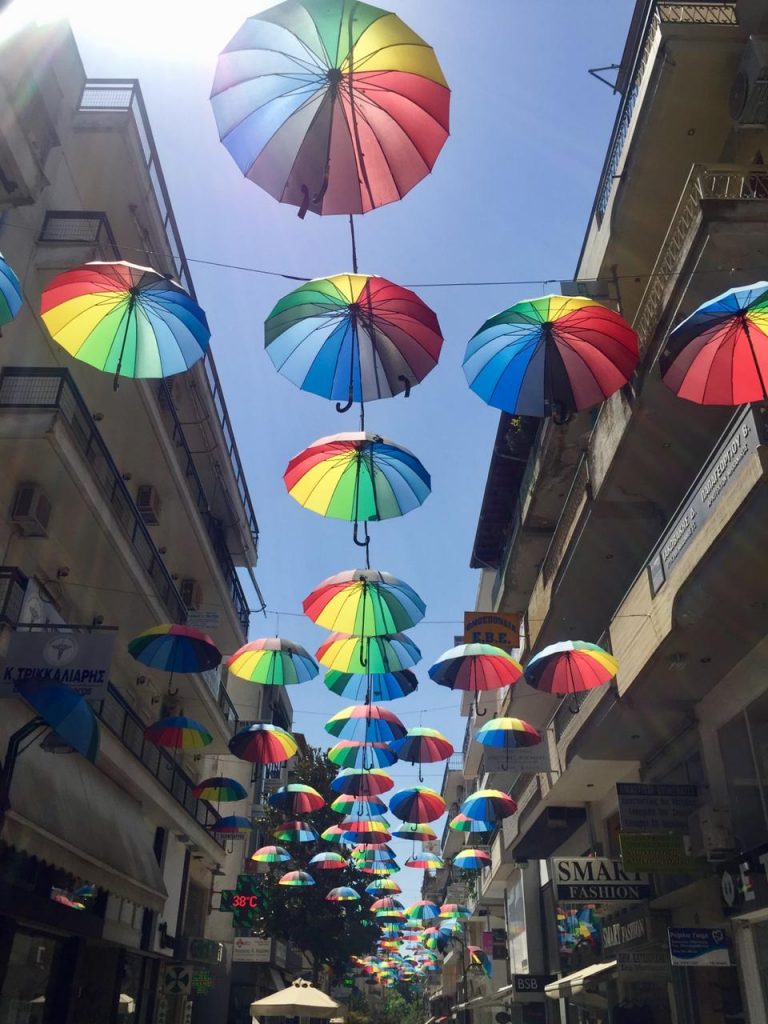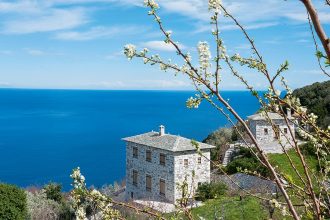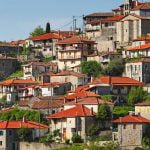Trikala is the capital of Trikala prefecture in northwestern Thessaly. The city straddles the Litheos river, which is a tributary of Pineios. The area has been inhabited since prehistoric times as the city was built on the ancient remnants of Trikka or Trikki, which was founded in the 3rd millennium BC, named after the nymph Trikki, the daughter of Peneus.
Archaeologists have also discovered Neolithic settlements, dating back to 6.000 BC. Trikala was an important center in antiquity and it was considered to be the birthplace and main residence of the god of medicine, Asclepius.

Today it is a vibrant capital, well-known throughout Greece for its innovation and culture and also for its historic monuments and the picturesque old town. The city has implemented many smart solutions for its residents and visitors.
Let’s take a bike and ride through the quarters of this charming city!
The Old Town
The Old Town of Trikala consists of the districts “Varousi” and “Manavika”. Varousi is located at the foot of the Byzantine Castle, built by Justinian on the acropolis of ancient Trikke, in the 6th century AD.
The Old Town used to be the noble, Christian, self-governing quarter of the city. Most of the Byzantine churches, built between the 14th and the 19th centuries, such as Agioi Anargyri, Agios Stefanos, Agios Dimitrios, as well as the metropolitan church of the city, Agios Nikolaos, are situated here.
Following the district “Varousi” up to the central square, visitors find “Manavika”, the most famous district of Trikala with characteristic architecture.
The “smart” city
Trikala has the distinction of being the first smart city in Greece, integrating new technologies into the daily life of its residents. It is a model city for the rest of Greece as it has adopted many technological innovations, such as the use of photocells in AMEA positions which automatically inform the municipal authority of illegal parking. Moreover,
Trikala welcomed Europe’s first driverless buses and it was characterized as the first “smart” city in Greece, in 2015.
Litheos River

We could say that the Litheos river is the jewel of Trikala, bisecting the city center. There is no way that it will not attract your attention wherever you are in the city. The Central Bridge, built in 1886, connects the central square with the main pedestrian street.
The Matsopoulos Mill and the Mill of the Elves
The Matsopoulos Mill was constructed in 1884 and today it is a historical-industrial building, operating as a museum and cultural center. It was the first rolling mill in Greece and the largest in the Balkans. During Christmas period, Matsopoulos Mill is transformed into the “Mill of Elves”, Greece’s most famous Christmas park, with over 1 million visitors arriving in Trikala to live this Christmas experience.
Nearby destinations
It is impossible to travel to Trikala and not visit the town of Kalambaka to admire the spectacular rocks and visit one of the monasteries of Meteora, a unique wonder of nature on the entire planet. In addition, just outside the city, visitors can find an arched bridge and the waterfalls of Palaiokaria, with crystal waters surrounded by a dense forest. If you want to experience the absolute natural beauty, head up the west side of the mountain, amid a lush landscape of planes and firs, with a view of the river and the little villages across the way to reach the amazing villages of Elati and Pertouli. Traditional taverns, cosy cafes, delicious food, horse riding in the forest are some of the things that will make you love the mountain side of Trikala.
How to get to Trikala
By car:
From Athens: 334 km
From Thessaloniki (via Larissa): 214 km
From Thessaloniki (via Grevena): 250 km
The city is also served by a railway station.





